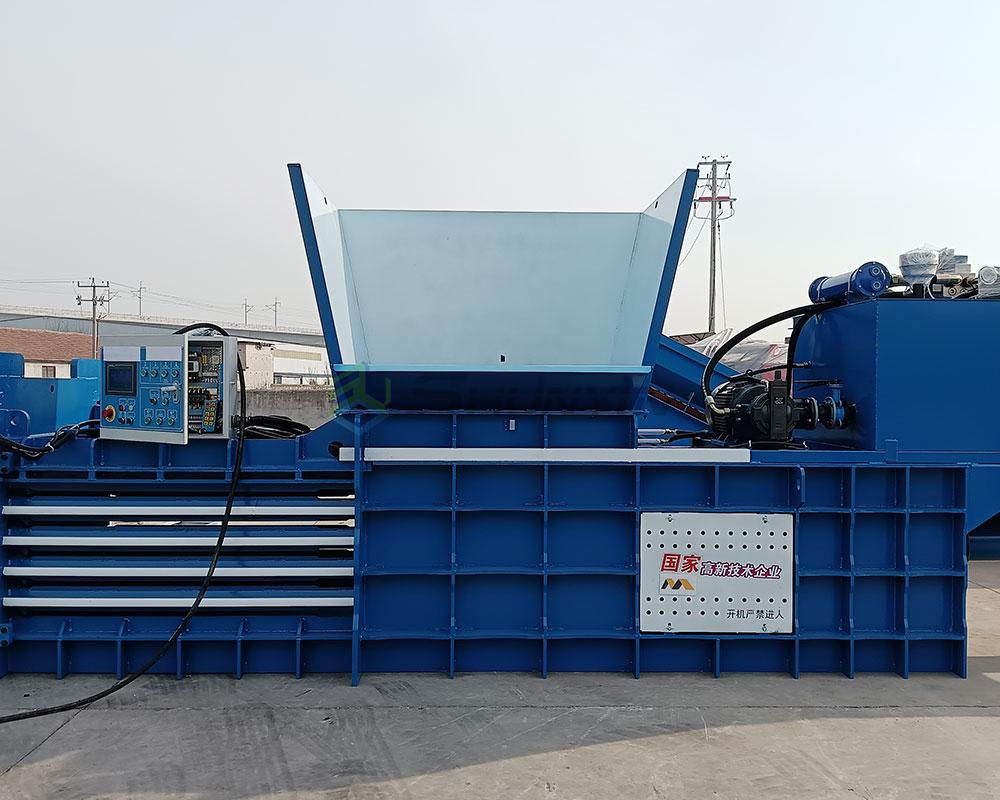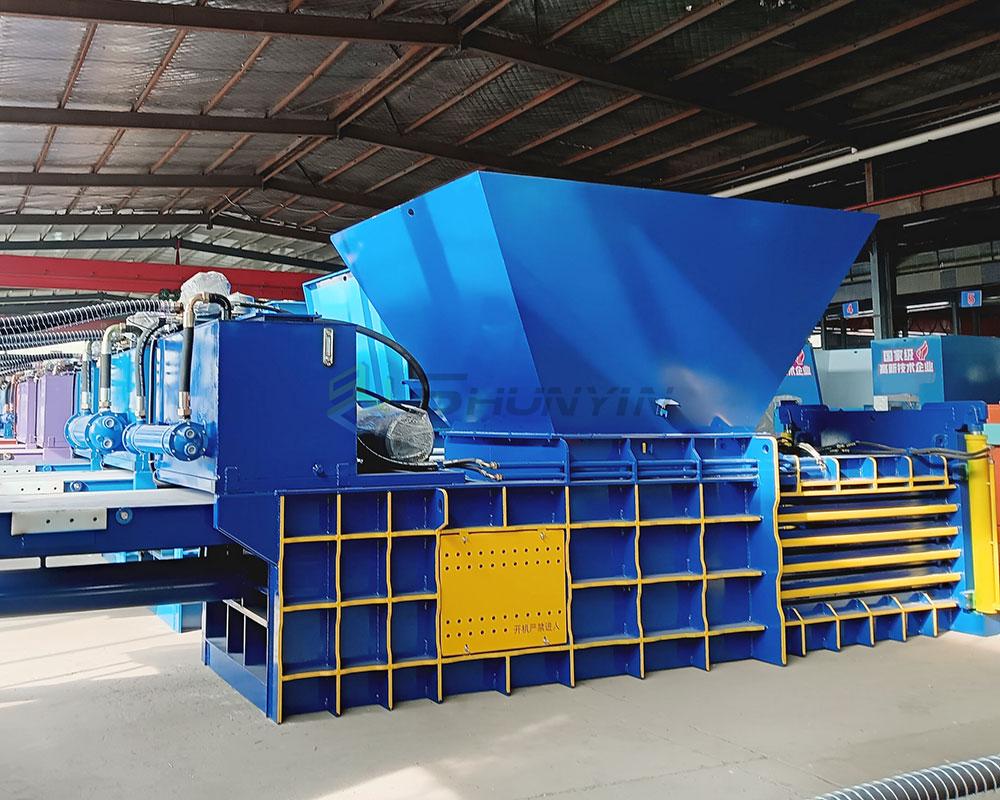Warehouses drowning in cardboard waste? Costly disposal burning profits? Our balers transform trash into cash immediately. Stop letting recycling costs crush your bottom line.
Cardboard baler prices vary: vertical models ($3k–10k) suit small operations, while heavy-duty horizontal balers ($10k–50k+) deliver higher ROI through automated processing, labor savings, and increased resale value from denser bales that fetch premium prices from recyclers.
Just helped a Canadian distributor cut waste costs by 70% last month. Your turn next.
Is a Cardboard Baler Worth It?
Seeing cardboard piles grow daily? That’s profit sitting unused. Each untapped ton equals wasted dollars.
Yes, balers typically pay for themselves in 6-12 months through labor reduction (40-60% savings), storage optimization (50-70% less space needed), and new revenue from bale resale – making them revenue-generating assets that also boost ESG credentials.

Transforming Waste into Profit Centers
Here’s what our North American clients consistently report:
| ROI Factor | Vertical Baler Impact | Horizontal Baler Impact |
|---|---|---|
| Labor Cost Reduction | 30-40% | 50-70% |
| Storage Space Saved | 40% | 70% |
| Bale Revenue Potential | $50-80/ton | $90-150/ton |
| ESG Value Add | Moderate | High (export markets) |
Critical insight: Quality matters. A cheap baler costs more long-term:
- Weak hydraulics = inconsistent density = lost revenue
- No automation = hidden labor costs
- Short life span = frequent replacements
Last spring, a Québec recycler upgraded to our SY-850H model and now moves 15 tons/day without downtime. Send us your daily volume for a custom ROI projection via WhatsApp.
How Many Bales of Cardboard Make a Ton?
Mishandling bale density burns money in transport costs. Loose packing means more bales to move.
Density rules: high-pressure horizontal balers create 1.25-2.5 heavy bales (400-800kg each) per ton, while standard vertical models yield 4-10 lighter bales (100-250kg). Denser cubes mean fewer truckloads and higher prices.
Mastering Density Economics
Why does bale weight dictate profit? Our facility testing revealed:
- Shipping efficiency: Single 700kg cube replaces 7 vertical bales
- Material premium: Recycling plants pay +10-20% for uniform density
- Moisture control: Tight compaction prevents 15-30% weight gain from rain
Here’s how baler choice affects your bottom line:
| Baler Type | Typical Bale Weight | Bales Per Ton | Key Profit Factor |
|---|---|---|---|
| Vertical | 100-150kg | 8-10 | Low initial cost |
| Budget Horizontal | 300-400kg | 3-3.3 | Medium throughput |
| Premium Horizontal | 550-800kg | 1.25-1.8 | Maximum resale value |
Adjustable hydraulic pressure in our SY Series solves seasonal challenges:
- Increase force for light packaging materials
- Reduce pressure for fragile corrugated
- Smart sensors maintain <5% density variance
Avoid the density trap: Our technical team can optimize your setup.
How Long Do Cardboard Balers Last?
Cheap balers become scrap metal in 4 years. Unexpected downtime cripples operations.
Quality balers last 8-12+ years with proper maintenance. Durability depends on usage cycles, material hardness, and intelligent features like automatic lubrication systems or remote diagnostics that prevent 80% of common failures.

Engineering for Maximum Service Life
Three pillars determine baler longevity:
Hydraulic System Integrity
- Heat-treated pistons withstand 400+ compression cycles daily
- Oil-cooling systems maintain optimal viscosity
- Dual filtration prevents >90% of cylinder wear
Electrical & Control Resilience
- IP65-rated PLC cabinets shrug off dust
- Overload protection circuits prevent motor burnout
- Vibration dampeners protect wiring
Preventive Innovation
- Remaining life indicators monitor critical parts
- Bluetooth lubrication alerts
- Modular component design
Our Chicago client’s SY-620 model has exceeded 30,000 hours. See its 6-year maintenance log below:
| Year | Maintenance Cost | Operational Hours | Issue Prevented |
|---|---|---|---|
| 1 | $400 | 5,600 | Dust sealing |
| 3 | $2,200 | 18,500 | Pressure sensor |
| 5 | $6,750 | 29,800 | Hydraulic pump |
Extend your machine’s life: Share your usage pattern for a longevity estimate.
Can You Make Money from Cardboard?
Burying cardboard in landfills? That’s throwing away liquid cash. Properly baled cardboard has real market value.
Definitely yes: Compacted cardboard creates dual income streams – direct bale sales (current market rate $60-150/ton) plus cost savings from reduced disposal fees, transportation, and storage. Combined with ESG advantages, it becomes strategic profit.

Profit System Design: Beyond Basic Compaction
Maximize returns through integrated bale economics:
| Revenue Factor | Profit Enhancement Strategy | Implementation |
|---|---|---|
| Premium Grade Segregation | Higher purity = higher price | Optical sorting systems |
| Volume Commitments | Locked contracts hedge prices | 6-month agreements |
| Export Premiums | Dense bales avoid reloads | ISO-sized packaging |
| Carbon Credit Generation | Certified waste reduction | Automated tracking |
Our Vancouver partner achieved $120/ton profitability using:
- Dynamic Compression: Adjusting force by material thickness
- Digital Certification: Blockchain bale origin verification
- Market Integration: Automated pricing feeds to Alibaba
Actual profit snapshots:
- Midwest manufacturer: $78,300 annual profit
- Texas distribution center: $52/machine daily ROI
- Japanese reseller: 20% export premium to China mills
Discover your true potential: Send us your monthly cardboard volume via WhatsApp for a free profit report.
Conclusion
Cardboard balers generate rapid ROI through waste-to-revenue conversion – invest wisely for lasting returns.








